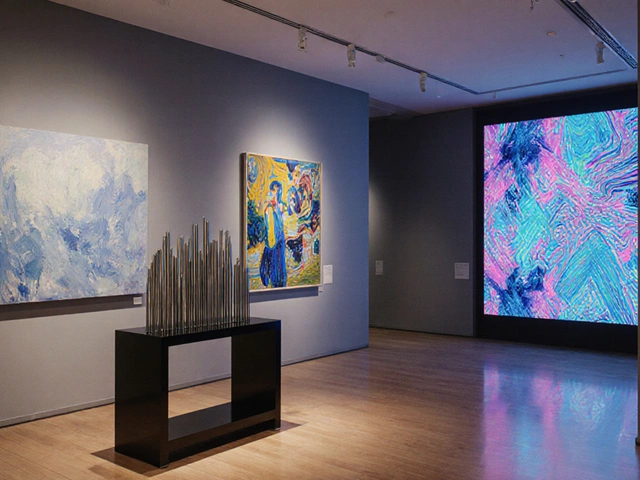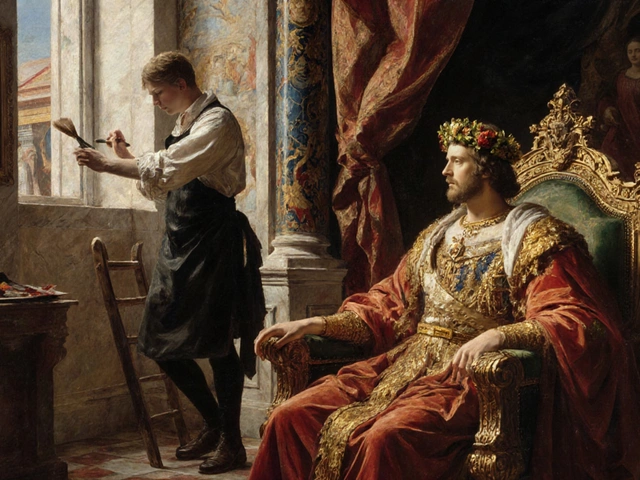Ever wondered what makes an art print worth its weight in gold? It's not just about pretty pictures. Knowing what prints are worth money can turn your casual interest in art into a savvy side hustle or a rewarding hobby.
First up, it’s important to dig into the artist's reputation. Yeah, the bigger their name, the more cash their prints can reel in. But it's not all about fame. Sometimes lesser-known artists have works with incredible potential, especially if they're gaining traction fast.
Size matters in the art world too—specifically, the edition size of the print. Limited-edition prints, as the name suggests, are scarce, which tends to ramp up their value. Think of it this way: fewer copies mean less chance of them flooding the market and devaluing the piece you own.
Keep your eyes peeled for up-and-coming artists or trends. A little bit of foresight can help you spot those hidden gems before they become hot commodities. And don't forget about the condition. Even the smallest crease or hyper-fading can take a significant chunk out of a print's value. Handle them with care and maybe even invest in some museo-quality frames for extra protection.
- Understanding the Value of Art Prints
- Factors That Affect Print Value
- Spotting Prints with Potential
- Protecting and Growing Your Investment
Understanding the Value of Art Prints
Let's unravel what makes some art prints command higher prices than others. The value of art prints isn't just about how they look but involves several key factors that savvy collectors swear by.
The Artist's Reputation
When it comes to prints, the artist's name plays a huge role. Artists who have established themselves or have a unique story tend to have prints that fetch higher prices. Consider artists like Banksy or Andy Warhol, whose works remain sought after. Their prints are more than just art; they're cultural icons, and this notoriety boosts their worth significantly in the art market.
Edition Sizes Matter
Not all prints are created equal. The smaller the edition size, the more valuable the print generally becomes. Why? It’s about rarity. Limited editions come with a built-in scarcity, making them pricier as collectors scramble to own a piece of something rare. For example, collectors often pay a premium for prints that are part of editions under 150.
Print Quality and Condition
Quality isn't just about the paper or the ink—though that's important too. A high-quality print maintains its color, clarity, and texture over time. Prints in mint condition always fetch more. Watch out for damage like fading, creases, or tears. These issues can drastically reduce value.
Historical and Cultural Significance
Some prints carry historical weight. Prints that capture a moment in history or reflect significant cultural moments tend to be highly valued. This could be due to the story they tell or how they resonate with collectors on a deeper level.
Other Factors
There are often unseen elements that influence print value. For instance, the existence of the original artwork can affect a print's price. Plus, documentation like a certificate of authenticity or an artist’s signature adds trust and, usually, value.
| Factor | Impact on Value |
|---|---|
| Artist's Reputation | High |
| Edition Size | High |
| Quality | Moderate to High |
| Historical Significance | Variable |
| Documentation | Moderate |
The art market is as much about knowledge as taste. Understanding these elements can let you navigate the nuances of collectible art more confidently.
Factors That Affect Print Value
When it comes to art prints, figuring out what makes them valuable isn't really rocket science, but there are some crucial factors to consider. Understanding these can help you pick out prints that won’t just look good on your wall, but could pay off financially down the line.
Artist's Reputation
The name on the print isn't just there for show. The artist's reputation plays a massive role in the print's value. An artist with a history of sold-out shows and high auction prices is likely to have prints that fetch a higher price. An emerging artist with buzz can be a great bet too if you’re willing to watch their career grow.
Edition Size
Edition size is key—think about it like supply and demand. Limited editions are more valuable because there aren't many to go around. If only 50 prints of a piece were made, they're rarer, and rarity often translates to higher value. Check the edition number on the print itself; it's usually written as a fraction, like 25/100, meaning the 25th print out of 100.
Condition and Quality
Condition is king in the world of valuable prints. Any damage like fading, stains, or tears can seriously impact the value. Prints should be kept in great shape, ideally by using archival materials and professional framing. The print quality itself—sharpness, color fidelity—is another factor. A well-maintained print with vibrant colors is appealing both aesthetically and financially.
Historical Significance
Sometimes the story behind a print can shoot its worth sky-high. Prints connected to significant events or periods often carry extra weight. A piece might not only be beautiful but also a snapshot of a moment in history, making it even more desirable.
| Factor | Impact on Value |
|---|---|
| Artist's Reputation | High |
| Edition Size | High |
| Condition | Very High |
| Historical Significance | Moderate to High |
Keeping these factors in mind can definitely steer you in the right direction when it comes to spotting collectible art. And remember, investing in art is as much about enjoying what you have as it is about potential profits, so choose pieces that speak to you personally too.

Spotting Prints with Potential
Spotting a print that can boost your art portfolio or offer a sweet return on investment isn't always straightforward. But there are key things to watch out for. Let's break down some strategies to help you identify those valuable art prints.
Watch the Artist's Trajectory
Keep tabs on rising stars in the art world. It’s like scouting for the next sports prodigy. Social media can be a goldmine for this. Follow artists on platforms like Instagram to gauge their popularity and see how critics respond to their work. The next big thing might just have a smaller following today.
Limited Editions Hold Value
Ever heard of supply and demand? Limited-edition prints are a prime example. When only 50 prints of a work exist, each one is inherently more valuable than a mass-produced piece. A print signed or numbered by the artist can signal its rarity and authenticity, nudging the value upward.
Quality Reproduction Over Mass Production
Not all prints are created equal. Pay attention to the printing method used. Methods like lithographs or giclée produce high-quality results that can more closely replicate the original artwork's detail and color. This quality can significantly impact future value.
Trends and Timing
Just like with tech stocks, timing is everything. Are there current trends in collectible art that suggest a shift in what buyers might covet soon? Following art market trends or reading up on recent gallery shows can give you an edge.
Provenance and Authenticity Matter
Always check a print's provenance. Knowing where a print has been displayed, or who has owned it can bolster its pedigree. Also, ensure authenticity by checking for certificates or stamps that verify it as genuine.
Example Table: Top Artists to Watch
| Artist Name | Style | Why They're Hot |
|---|---|---|
| Sofia Zhang | Abstract Modern | Gaining traction with unique urban themes |
| Leon Harte | Surrealism | Praised for bold colors and thought-provoking themes |
| Maya Presley | Pop Art | Bringing nostalgic flair to contemporary issues |
In essence, finding prints with potential is about keen observation and a bit of market savvy. Stay curious, stay informed, and soon you might spot the next big thing hanging on your wall.
Protecting and Growing Your Investment
Alright, so you've got your hands on some promising art prints. Now, it’s all about making sure they stay valuable and grow in worth. How do you do that? Well, let's talk about a few straightforward steps you can take to safeguard your investment.
The Importance of Proper Storage
Let’s start with where and how to store them. Art prints are sensitive to things like humidity and light, so you’ll want to keep them in a cool, dry place. Direct sunlight? That’s a no-go—it can fade the colors big time. Acid-free materials for storage and framing are also a must to prevent any long-term damage.
Choose the Right Frame
A quality frame doesn’t just make your prints look good on the wall. It offers crucial protection. Look for museum-grade framing materials that can shield your art from environmental factors. It's worth the extra bucks in the long run.
Building and Diversifying Your Collection
Once your current pieces are secure, think about diversifying. Expanding your collection with a mix of established artists and emerging talents can help spread the risk. This variety can provide a cushion if one market dips while another soars.
Tapping Into Market Trends
Do some homework on market trends. Follow art galleries, auctions, and exhibitions to stay in the know. The value of art prints can fluctuate based on trends, so staying updated helps you make strategic decisions.
| Year | Average Growth Rate of Art Prints |
|---|---|
| 2022 | 5% |
| 2023 | 6% |
With a smart approach and a bit of foresight, your valuable prints can not only be a beautiful adornment for your home but a fruitful investment over time.



